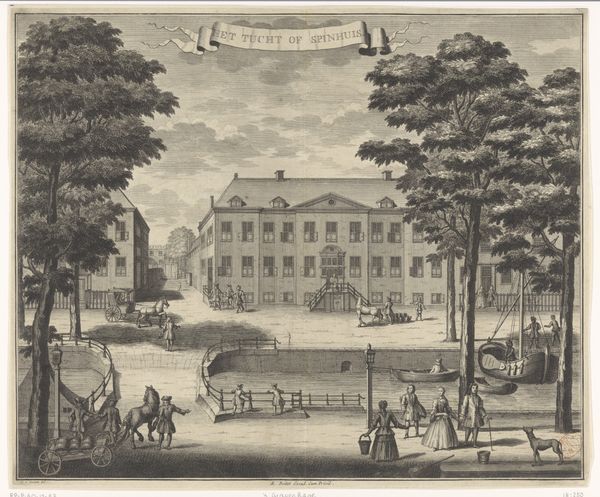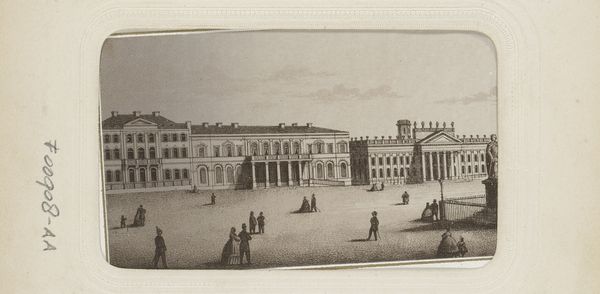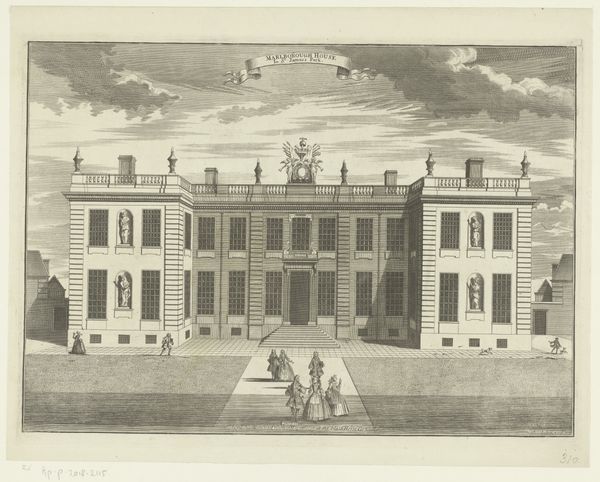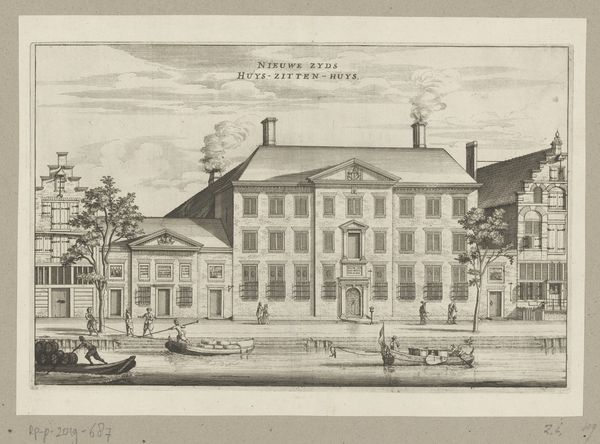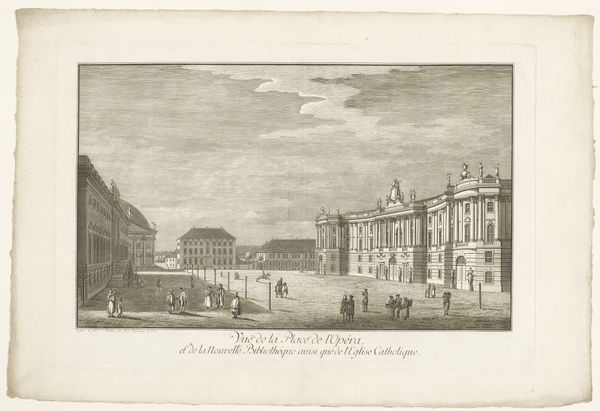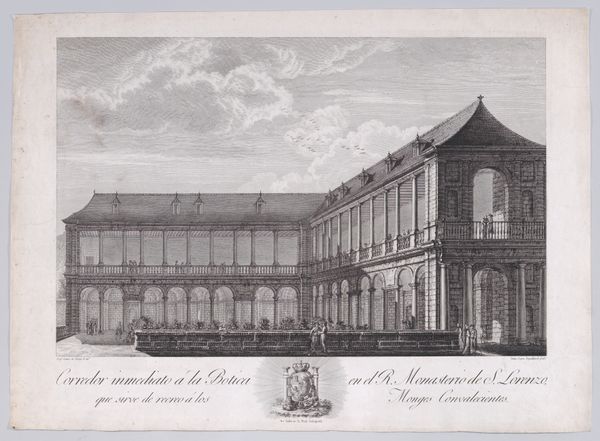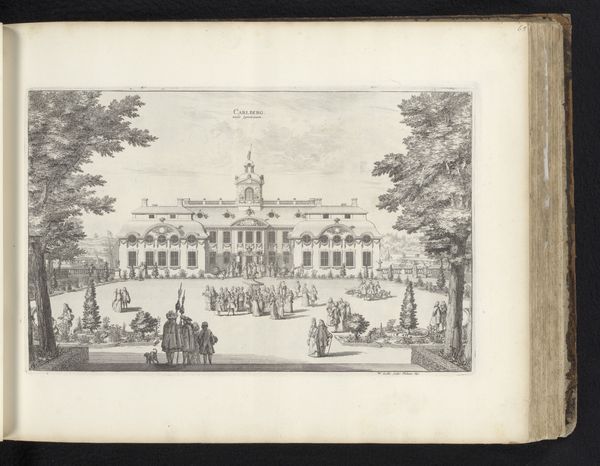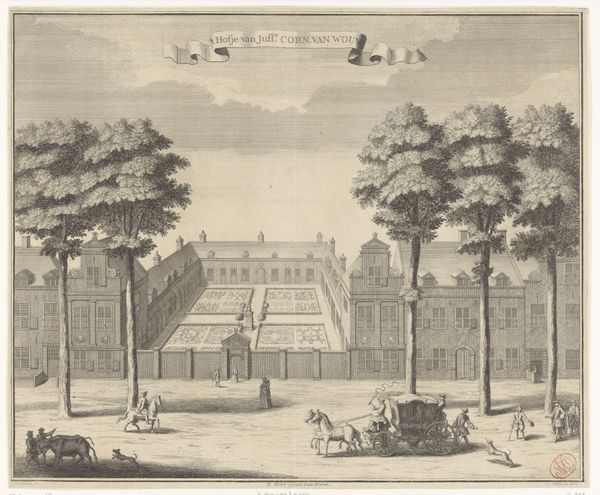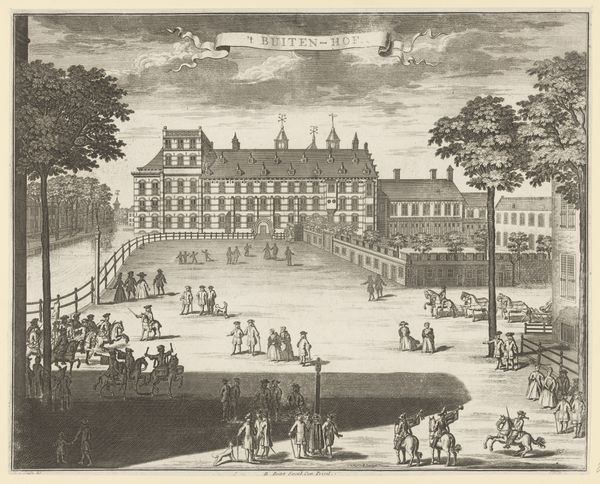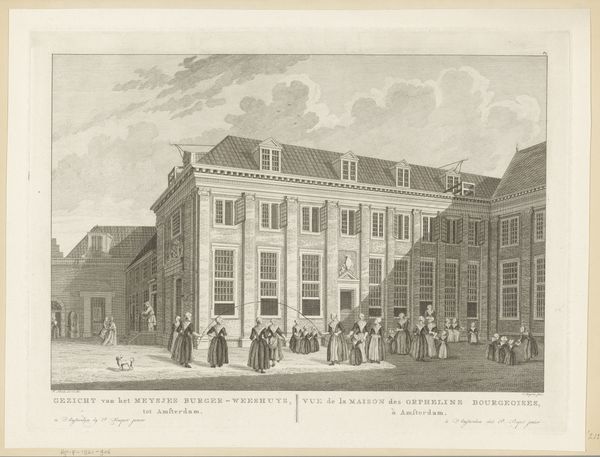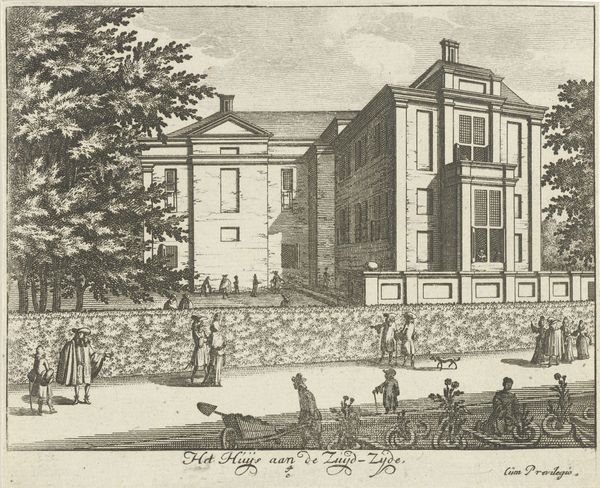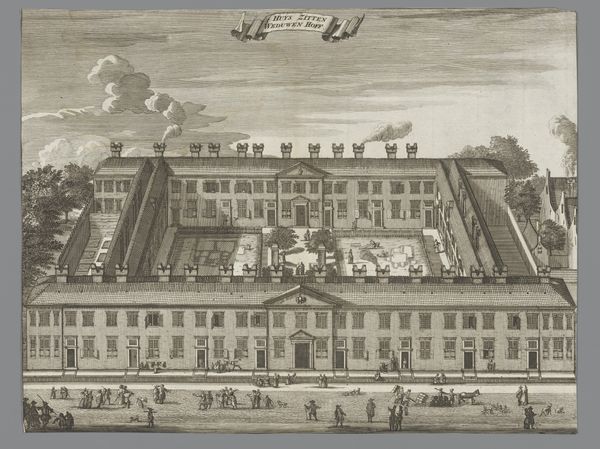
print, engraving, architecture
#
baroque
# print
#
classical-realism
#
geometric
#
line
#
cityscape
#
engraving
#
architecture
Dimensions: height 285 mm, width 346 mm
Copyright: Rijks Museum: Open Domain
Editor: This is a print entitled "Gezicht op Paleis Noordeinde te Den Haag," made sometime between 1730 and 1736 by an anonymous artist. The detail achieved through engraving is striking. What stands out to you in this piece? Curator: The engraving meticulously depicts the architecture and grounds, offering us a window into the past and a meditation on power and place. Look at the banner, “Het Oude Hof.” What do you suppose the effect is of placing language in this primarily visual representation of the palace? Editor: I imagine it helps with recognition but maybe also confers authority. Curator: Precisely. And notice how the activity in the foreground – the figures promenading, the carriages – animate the scene. What do the activities and arrangement of these figures suggest to you? Editor: There is certainly an effort being made to project a cultivated nobility at leisure in the palace grounds. The riders and hounds on the left look like they may be staging some type of ceremonial hunt, if hunting at all. Curator: Good eye! The hunt as symbol. And the architectural details are telling; they create a sense of permanence and order, reflecting the Baroque style's emphasis on grandeur. These elements combined transmit cultural memory, not just of a physical place but of a social structure. Consider how the composition subtly reinforces hierarchy. Does the palace appear inviting or imposing to you? Editor: I see it both ways; the people make the palace approachable, but the size and symmetry are intimidating. It makes me think about the Dutch Republic’s self-image and projection of soft power. Curator: An excellent point. Images like this are rarely just records; they are active participants in shaping how a place and its people are perceived and remembered. The symbolism here operates on multiple levels. Editor: That is a really insightful perspective, framing the image as an active participant and reflection on collective memory.
Comments
No comments
Be the first to comment and join the conversation on the ultimate creative platform.
